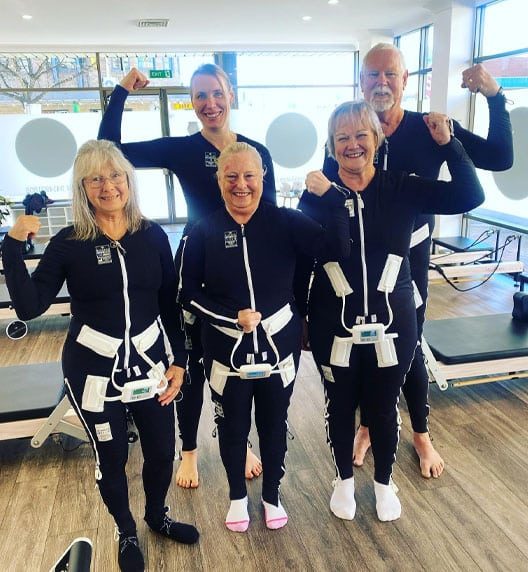At Mollii Australia, we uphold the highest level of transparency regarding our assistive technology. On this page, you can view the research that has gone into creating our products including our theoretical framework, user manual and programming certification.
If you have any questions about the Exopulse Mollii Suit, call us on 0491 616 452. Mollii Australia offers this technology throughout Australia and New Zealand, including but not limited to Newcastle, Sydney, Melbourne, Brisbane, Canberra, the Mid North Coast, the Central Coast, the Gold Coast and Tasmania.

An independent review of research on the neuro-physiological mechanisms the Mollii Suit uses and how it can be applied clinically for spasticity, dystonia as well as pain relief is out now. This review carried out by Dr Pennati, MD, PhD student and colleagues, within the Karolinska Institutet, Stockholm, Sweden was completed in October 2017 and funded by the Swedish Government innovation agency. The review provides an understanding of how Mollii’s sub-threshold, sensory electro-stimulation works based on current, relevant independent research.
The Mollii method is an innovative approach for non-invasive electrical stimulation to reduce spasticity and improve motor function in persons with a lesion in the central nervous system. The theoretical framework below describes the background of the Mollii concept.
Sweden
The study was conducted as a qualitative study with gathering of data through a questionnaire of fifty-four children with cerebral palsy. The result of the study showed that the most pronounced effect of the treatment with the Mollii suit was reduced spasticity, as reported by 61% of patients. An improvement in overall mobility was reported by 48% and more than 30% experienced that they could easily trample the heels, lift their arms over their heads and/or straighten their hands and fingers.
Sweden
This study aimed to assess the cost-effectiveness of the Inerventions method (as per above study) and compare it with conventional medical treatments, such as baclofen, botolium toxin and surgery, for children with cerebral palsy in Sweden. Results indicate that the Inerventions method was more effective than all other treatments, and less costly than most other treatments.
London
This study showed that the patient had improved quality of movement in the upper extremity after a one hour of treatment with the Mollii suit. The study participant explained that “The Mollii suit lessens the battle between my left and right side, resulting in less energy needed for mobility”.
France
At the 9th World Congress of Conductive Education in Budapest, Mollii expert and Conductor Mira Auer presented her study from Pouilly-sur-Loire, France in 24 children. Mira has evaluated the combination of Conductive Education while using the Mollii suit.
United Kingdom
Mollii was reviewed under NICE’s ‘MedTech Innovation Bulletin” in 2017. Their review can be found below.
Västernorrland
Six adults with cerebral palsy were evaluated over a 6 month period in Sweden by physiotherapist Len Andersson. The report on four of them is attached as a PDF on this page.
Stockholm
Spasticity can be very difficult to evaluate with the measuring protocols available and bias is difficult to avoid or eliminate. With this in mind, Mollii’s effect on hand spasticity was evaluated with a innovative measuring tool, NeuroFlexor. NeuroFlexor was developed and validated by scientists at the Karolinska Institute, Stockholm, as per research articles below.
NeuroFlexor was used on a patient with severe hand spasticity due to cerebral palsy. Scientists from the NeuroFlexor team were able to show a significant reduction of spasticity after a one hour session with the Mollii suit. Repeated tests with NeuroFlexor will be required to scientifically evaluate the Mollii Suit’s effect of hand spasticity. In the below PDF, results can be seen both before and after a one hour session with the Mollii suit, as measured by the NeuroFlexor.
University hospital of Hvidovre, Copenhagen, Denmark
The purpose of this study was to investigate whether a novel method of using reciprocal inhibition affects range of motion and spasticity on children with cerebral palsy.
Karolinska Institutet, Department of Clinical Sciences, Danderyd Hospital, Division of Rehabilitation Medicine, Entrévagen 8, SE-182 88 Stockholm, Sweden
The purpose of this study was to investigate whether spasticity after lesions of central motor pathways may be disabling and there is a need for new, cost-effective treatment methods offered by the electro-dress Mollii®.
Mollii Australia proudly extends its innovative services to the entire expanse of Australia and New Zealand. With our cutting-edge solutions, we are dedicated to making a positive impact on lives throughout these vibrant regions.